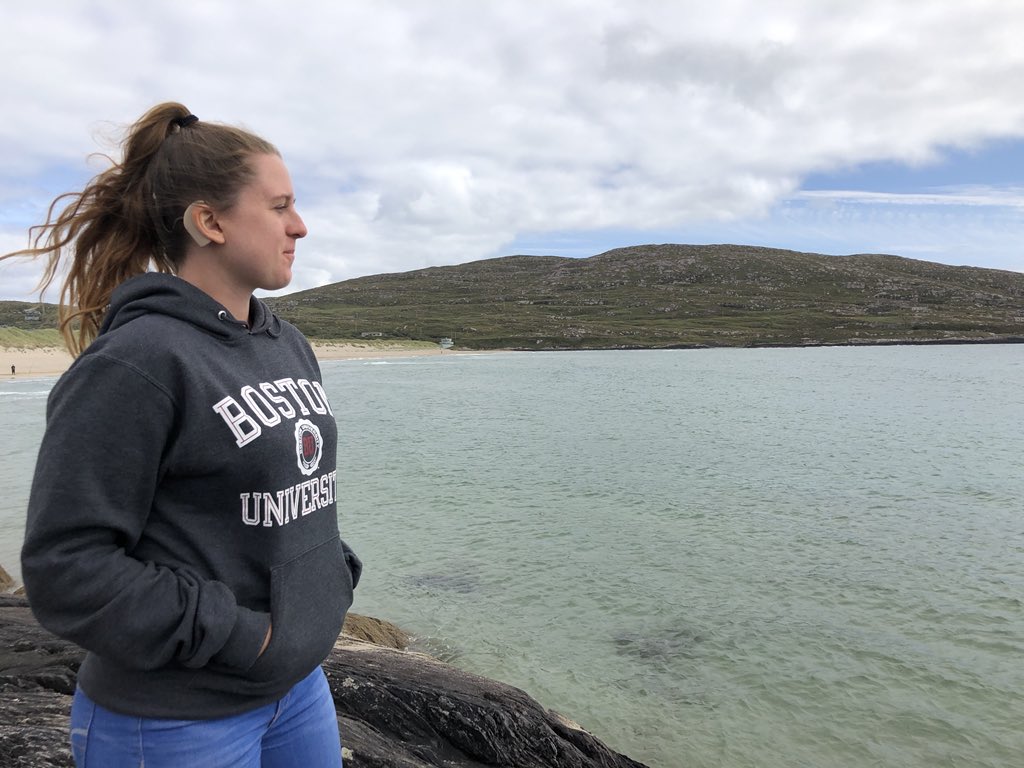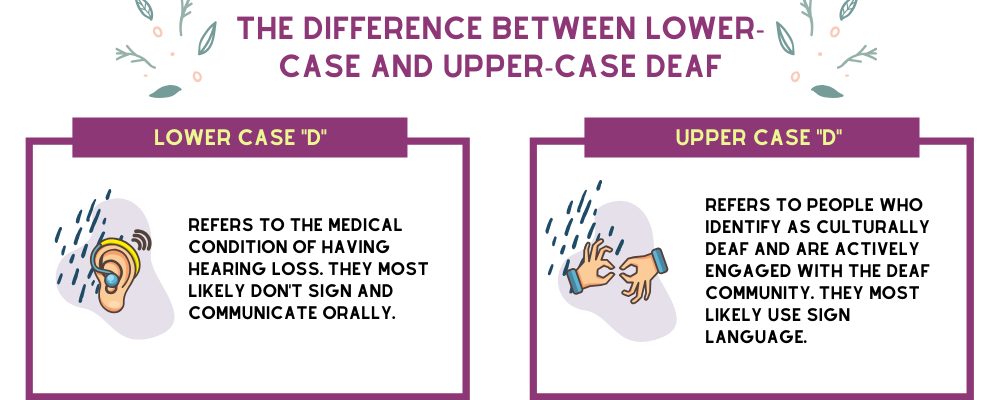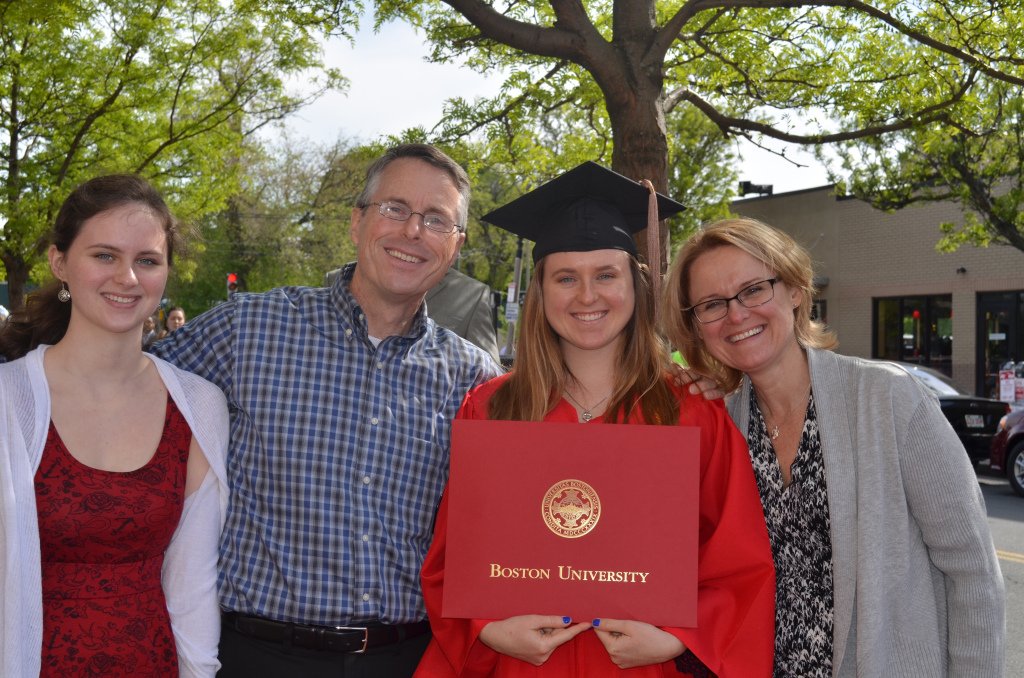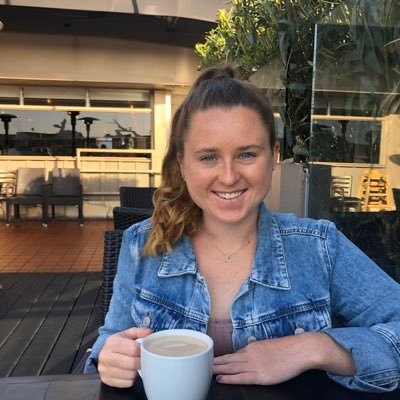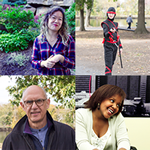Faces Behind the Screen: Alanna Kilroy
Quick Links
Alanna Kilroy is originally from Massachusetts. She currently works at Boston Consulting Group as a Global Finance Operations Associate. Alanna was born profoundly deaf.
In her free time, she loves to travel and explore different cultures, improve her film photography skills, hang out with friends, and explore vegetarian restaurants around the Boston area.
Part One
Let’s get to know more about your educational and professional background. Where did you go to university and what did you study?
I went to Boston University (BU) and I studied at the Questrom School of Business. I majored in business administration and I concentrated in finance and business law. I use my finance background at Boston Consulting Group, where I work as a Global Finance Operations Associate. My role there includes helping out the international controllers and alternate business models to manage the finance operations of the local offices.
When I was a freshman at BU, I was actually a film and TV major. I thought I wanted to go down a more creative route, like produce stories and make movies. I found out that I was more of a person who loves to be organized and get things done fast. With the creative world, it’s a little more slow-paced. I guess I was looking for something that was consistent – so I landed in the business school. I knew I was really good at organization, communication, and working in teams.
When did you become deaf? Do you identify as d/Deaf or hard of hearing?
I identify as deaf, with a lower-case “d”. I was born with severe to profound hearing loss in both ears. My parents found out when I was nine months old. They also found out that I had no cochleas in either of my ears. I have what’s called common cavities.
Back in 1995 or 1996, cochlear implants were so new. Because I had a tiny bit of hearing but no cochleas, there were no doctors were willing to give me cochlear implants at the time. Nobody across the U.S. would do it because they just didn’t think it was possible for me. It wasn’t until my parents met a doctor named Dr. Noel Cohen, who worked at NYU in New York City, that I could get cochlear implants.
I didn’t get the implants until I became profoundly deaf in 2000 since it would destroy the rest of my hearing. I got my first implant the week before I turned 5 and the second one 2 weeks before Christmas in 2004.
What was your experience like prior to getting cochlear implants?
Before I got cochlear implants, I had hearing aids. I remember having them, but I don’t remember how much hearing I had at the time.
I was completely oral growing up. I didn’t start learning sign language until my senior year of high school, when I developed an interest in it. As I got older, I started meeting more people in the deaf community who signed and wanted to communicate with them as well.
Everyone in my family spoke to me orally. Growing up, I was the only deaf student at my elementary, middle, and high school. I was essentially the first deaf person that most people met.
What was your experience like being the only deaf student in school?
It was a pretty unique experience for me at school. I knew I was different. I had to carry around a speaker box because my teacher used a microphone to speak with me. Technology has obviously evolved since then.
I eventually received a better system that connected directly to my cochlear implants.
In middle school, I started to have someone sit next to me with a computer and I could see everything on the screen that was being said in the classroom. I could better participate in discussions.
When I moved on to high school, I started taking more advanced classes like honors and AP courses. I got CART, which stands for Communication Access Real-Time Translation, and it’s essentially someone typing everything that is said in the classroom verbatim. I was getting a live transcript on the computer screen that was placed on my desk.
I feel like it kind of affected me socially because when you see someone who has a computer placed next to them with a screen saying a bunch of different things, people can get intimidated by that. They’re not sure what to say and how to approach it.
Part Two
It seems like your teachers were able to accommodate you in school. How did you and your teachers go about this process?
I had an IEP throughout my time at school. It stands for Individualized Educational Plan. At the start of the school year, my parents and I would meet with my lead teachers and talk about what I needed in order to succeed in the classroom – in order to level the playing field.
At these meetings, it would be me, my leader teacher, my parents, a speech therapist, and a few people from the district. We would talk about the accommodations I needed for the upcoming year. I also needed to maximize my visibility of the classroom. I rely on lip-reading so it’s super helpful for me to see someone’s face when they’re talking.
For the most part, these meetings were a really positive experience. It taught me a lot about how to advocate for myself at such a young age. That’s how I’ve been able to continue asking for what I need – even today in the workplace.
I had an experience before where I was doing so well that my school thought I didn’t need accommodations anymore. It was about three weeks before I started my senior year of high school where my parents had found out that the school district was taking away my CART services because they thought I didn’t need them anymore. But really, they just didn’t want to pay for CART anymore. So we had to fight that. Without it, I wouldn’t be able to understand what’s going on in the classroom. That kind of got me off to a rough start my senior year because the first month, I had no accommodations other than a really old FM system that just wasn’t working. I eventually received CART again, but that was the one experience that stands out to me.
How does being deaf affect you? What does it mean to you?
Being deaf affects me every day because communication is at the heart of relationships, and when you’re deaf, that gets in the way. It’s about persevering and going above and beyond to make sure that I understand everybody and to make sure that I’m being the best version of myself.
Being deaf also means that I have a community out there where I’m able to connect with people on such a unique and personal level. I get to interact with people who’ve gone through similar struggles and experiences, so it’s special when you can connect with someone who shares that with you.
What’s a common mistake hearing people make when interacting with deaf people?
I feel like people have a lot of common misconceptions. One is that deaf people can’t talk. Another one is that all deaf people sign. Also, people get intimidated by deaf people. As a deaf person myself, I can actually feel that. I can tell they want to talk to me but they’re not sure what to say or what to do. It can be awkward.
I wish that if people have questions about deafness or about how to communicate with deaf people, just be honest and try not to tiptoe around the topic. I just want people to feel comfortable in the presence of something that is different.
What’s the best thing about being deaf?
I think the best thing about being deaf is being able to pick and choose when I want to hear. Once I take my processors off at night, I’m out like a light. I can get deep sleep at night and not have to worry about thunderstorms or sirens going by. I don’t understand how hearing people can handle that.
Another thing is definitely the community. I really love my friends that I’ve made in the deaf community. We share common experiences and interests so it’s so easy to just be with them. I can talk about literally anything in the world and be blunt and honest and I’m grateful for that.
Part Three
When did you gain an interest in traveling, film, and photography?
Ever since I was younger, I’ve always known that I wanted to travel and see the world. When I was a kid, we always went to either Florida or New Hampshire. To me, it wasn’t different enough. I just knew there was something more out there.
I took my first trip overseas when I was 17 years old with the People to People Student Ambassador Program to Europe. I went to England, France, and the Netherlands – to name a few.
I even went to Southeast Asia and spent two weeks at a deaf school in Nepal. The school was at the bottom of the Himalayas. My experience in Nepal opened my eyes to the differences in the deaf community. I was fortunate enough to grow up very privileged and have access to speech therapy, technology, cochlear implants, and a supportive family. In Nepal, many people don’t have the same privilege. It was a humbling experience to be able to interact with the children and serve as a mentor to them.
While I was there, I also was able to trek the Himalayas which was a pretty cool experience.
I formed an interest in film photography because I love the old format of it. The image seems a lot more genuine when you take a film photo, as opposed to taking it on a digital camera. You’re not just taking 50,000 photos at the same time. You just slowly take one and hope for the best.
When it comes to technology, what are some everyday issues you run into that hearing people might not?
I have a lot of WebEx meetings, which are like Skype meetings. I use a translating service on my phone for the meetings. Essentially, I’ll log into the meeting online and call in on the phone so I can pick up the sound. My captioning service usually helps, but sometimes it doesn’t work. It may freeze or take a while for the words to show up.
I feel like those are everyday struggles that the average person wouldn’t have to worry about. I worry about getting to my meeting on time, to make sure my captioning service is set up and working.
How does your job accommodate your disability?
My job is really good at providing accommodations for me. I have a super supportive team of colleagues. If something isn’t working for me, they are incredibly patient. Some of them will take time to write down what’s being said in meetings or flexible about rescheduling a meeting to another time if my captioning service isn’t available.
I’m also involved in the access ability network so I’m exploring opportunities where I can increase the use of closed captions on some of our internal videos.
How do you feel when you encounter an inaccessible website?
I feel frustrated. I understand that not everybody knows people who are deaf or even know that deaf people exist o they’re not thinking about it. But I just feel like it should be a universal thing that closed captions are available because I don’t want to constantly feel like I can’t participate in something or I can’t listen to something that I really want to listen to.
How do you overcome moments of adversity and what advice do you have for anyone who may be struggling?
I know of this organization called No Barriers and they have this motto, “what’s within you is stronger than what’s in your way.” So for anyone who’s out there struggling, you have to realize that you have the capability to overcome this and you just have to believe in yourself.
I had to realize that I’m resilient. I can overcome this. It’s just a blip in the middle of the day in your life. So to anyone who’s struggling, you just really, really need to believe that you’re stronger than whatever you’re facing.
Faces Behind the Screen would like to thank Alanna Kilroy for participating in our storytelling project. If you’re interested in sharing your story with us, fill out our nomination form.
Faces Behind the Screen is a storytelling project focusing on members of the Deaf and hard of hearing community.


